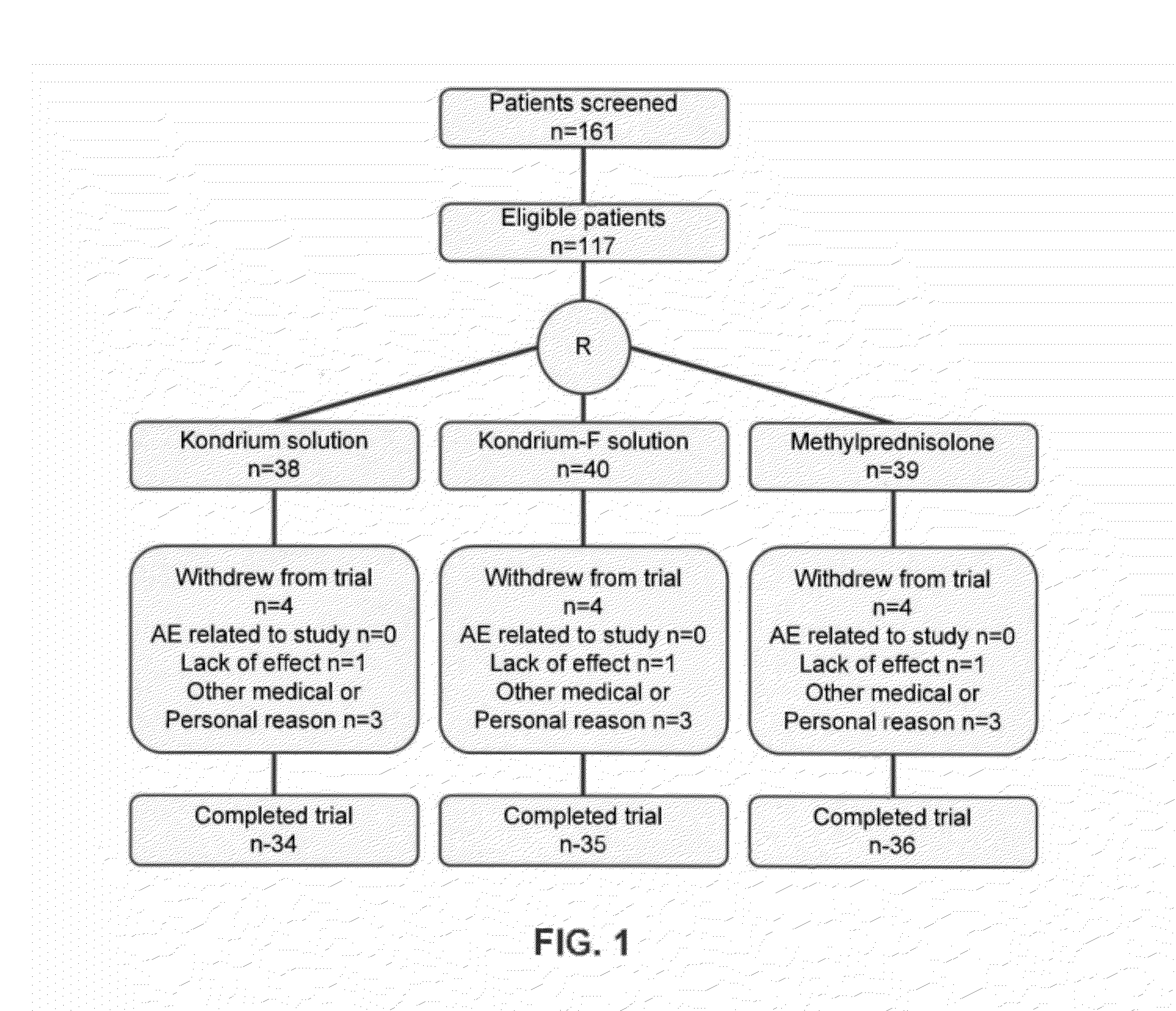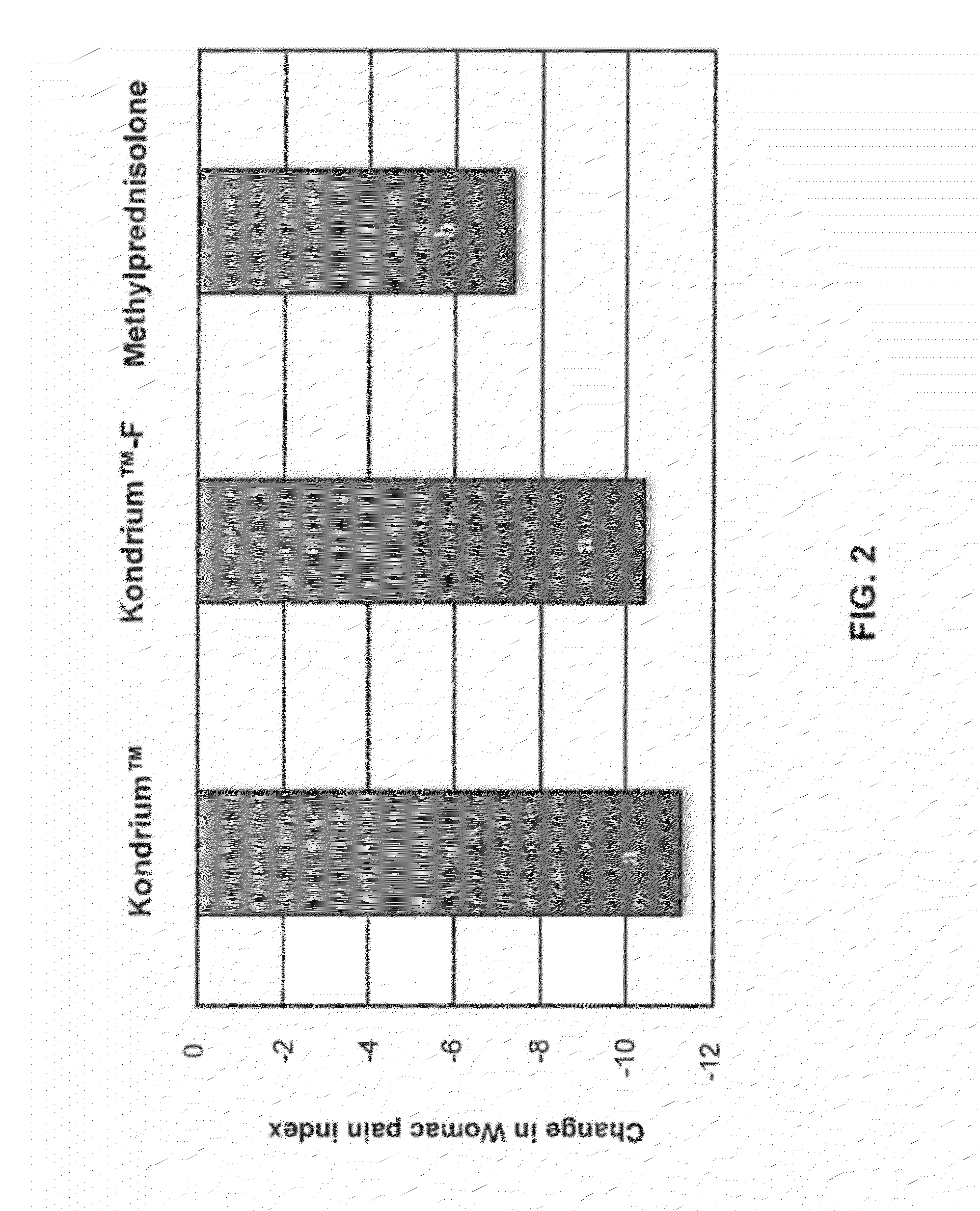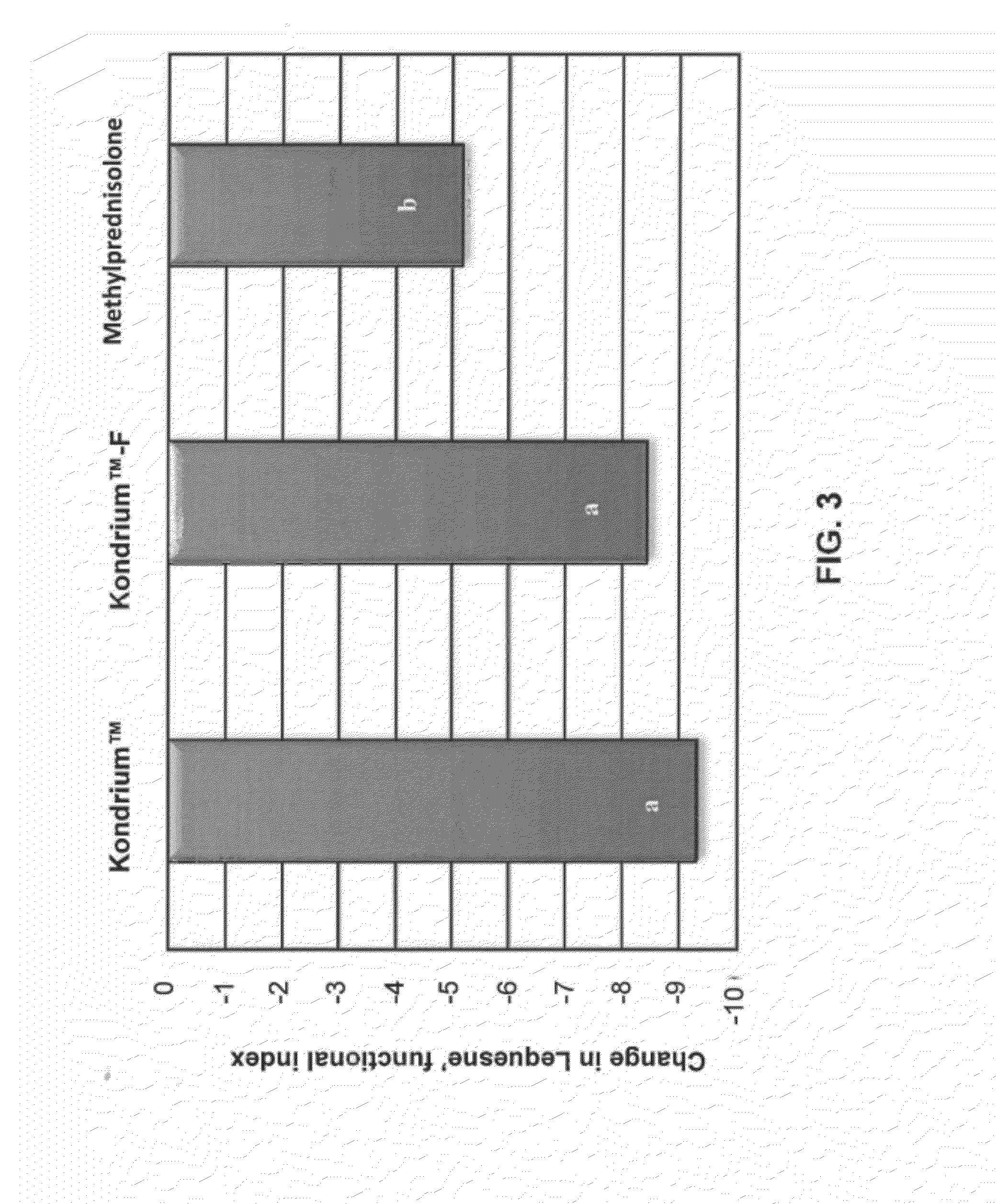Compositions and Methods for Treatment and Prevention of Osteoarthritis
a technology of osteoarthritis and compositions, applied in the field of osteoarthritis treatment and prevention, can solve the problems of oa articular cartilage losing mechanical resistance, elasticity and smoothness, and consequently reducing rigidity, and reducing rigidity
- Summary
- Abstract
- Description
- Claims
- Application Information
AI Technical Summary
Benefits of technology
Problems solved by technology
Method used
Image
Examples
example 1
Effects of Intraarticular Administration of Anti-OA Formulation on Patient WOMAC and Lequesne Indices
[0086]In the present experiments, 18 white patients, mean age of 57.8 years and diagnoses of gonartrosis grade I to V according to the Kellgren and Lawrence criteria were included in a clinical trial. The patients received intra-articular injection of 10 mL of a solution of sodium bicarbonate and calcium gluconate every month for up to 6 months. At the end of the treatment an intra-articular injection of 10 mL of a 1.77 g / mol (hyperosmolar) solution of sodium chloride was administered. The clinical efficacy measure of primary interest was the pain subscale from the Western Ontario University (WOMAC) and Lequesne indexes. At the 6-months follow-up evaluations of the developed formula injected to the knees exhibited a greater symptoms improvement in 90% of the total included patients (Table 1).
TABLE 1Changes from baseline in Womac and Lequesne Indices of patients injected with the deve...
example 2
Evaluation of the Comparative Efficacy of Kondrium™ and Methylprednisolone in the Treatment of Osteoarthritis of the Knee
[0087]Kondrium™ is the name of an exemplary pharmaceutical composition disclosed herein and in U.S. Patent Appl. No. 60 / 953,724 entitled “Composition and method for the treatment and prevention of Osteoarthritis”. This composition activates the buffer capacity of proteins that forms the cartilage which promotes the organification of ionized calcium, and also allows the linkage between chondrals and bone proteins. This study was designed to evaluate and compare the efficacy of Kondrium™ and methylprednisolone as active control in the treatment of osteoarthritis (OA) of knee. Methylprednisolone was chosen for comparison because at present it is the only drug medically accepted for treatment of osteoarthritis.
Methods
Study Design
[0088]This was a 16-week, randomized, double-blind, active-controlled, parallel-group study. The study received Ethics Committee approval, wa...
PUM
 Login to View More
Login to View More Abstract
Description
Claims
Application Information
 Login to View More
Login to View More - R&D
- Intellectual Property
- Life Sciences
- Materials
- Tech Scout
- Unparalleled Data Quality
- Higher Quality Content
- 60% Fewer Hallucinations
Browse by: Latest US Patents, China's latest patents, Technical Efficacy Thesaurus, Application Domain, Technology Topic, Popular Technical Reports.
© 2025 PatSnap. All rights reserved.Legal|Privacy policy|Modern Slavery Act Transparency Statement|Sitemap|About US| Contact US: help@patsnap.com



